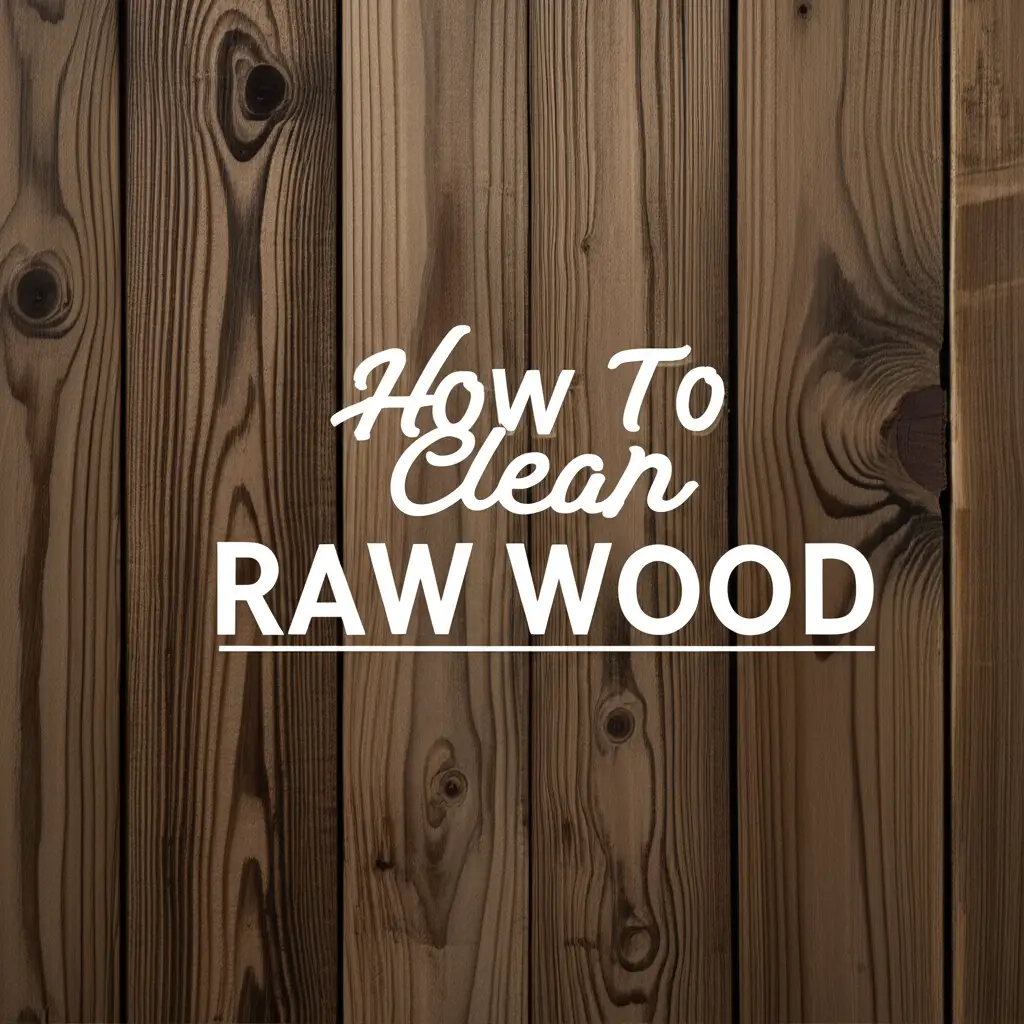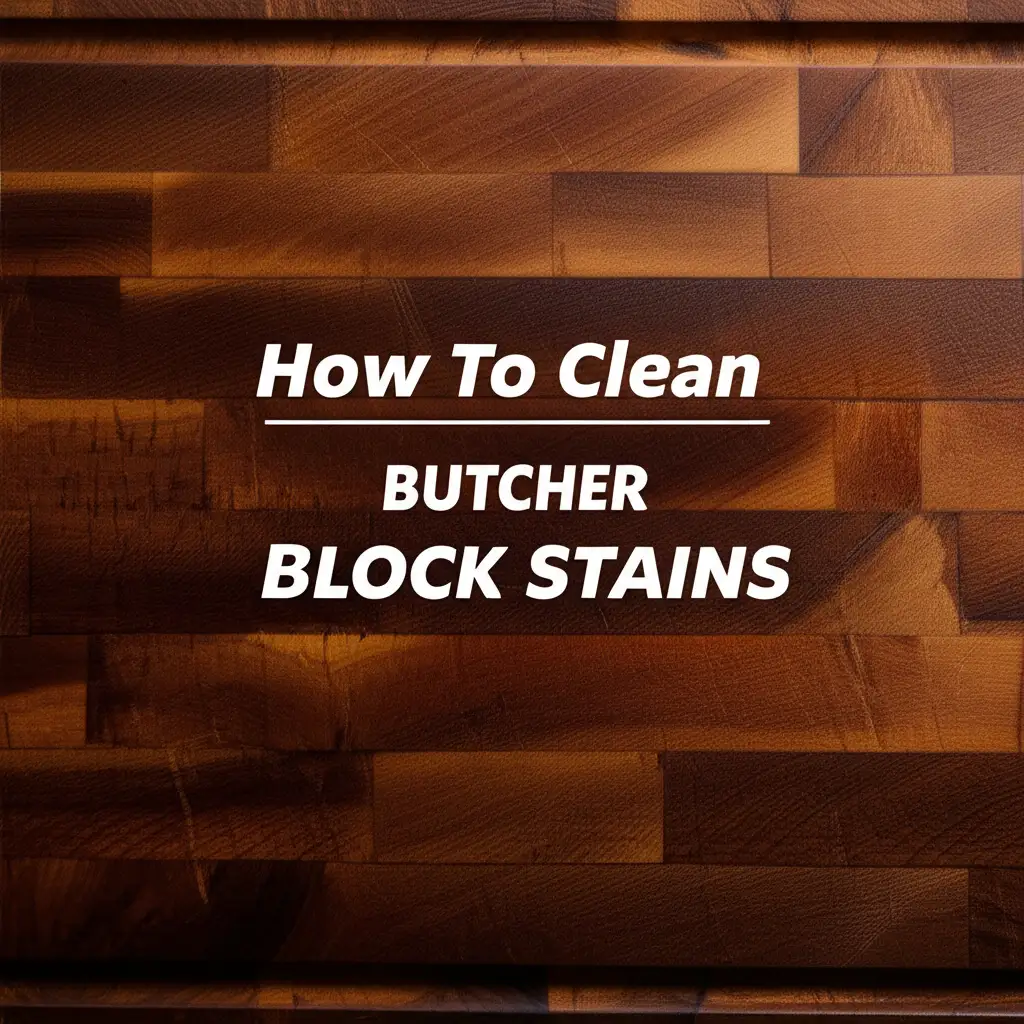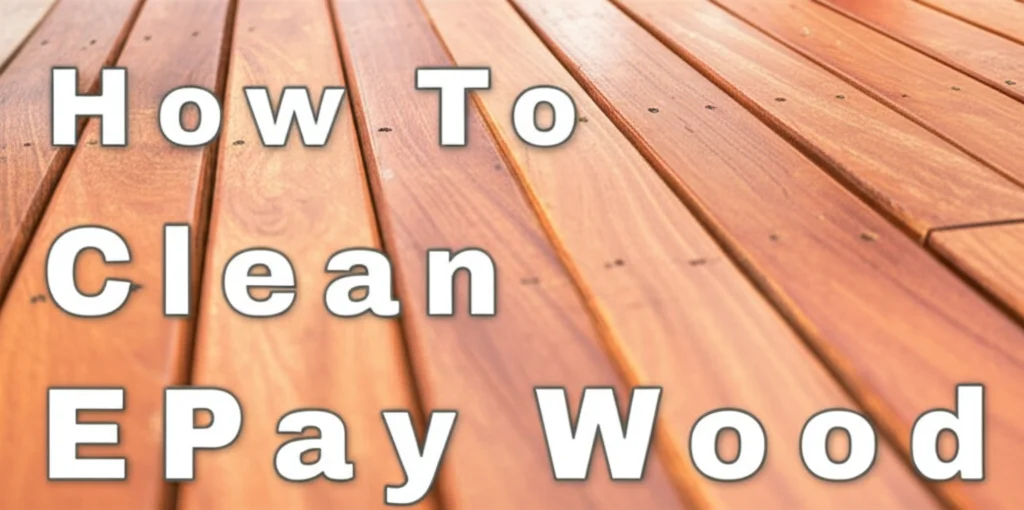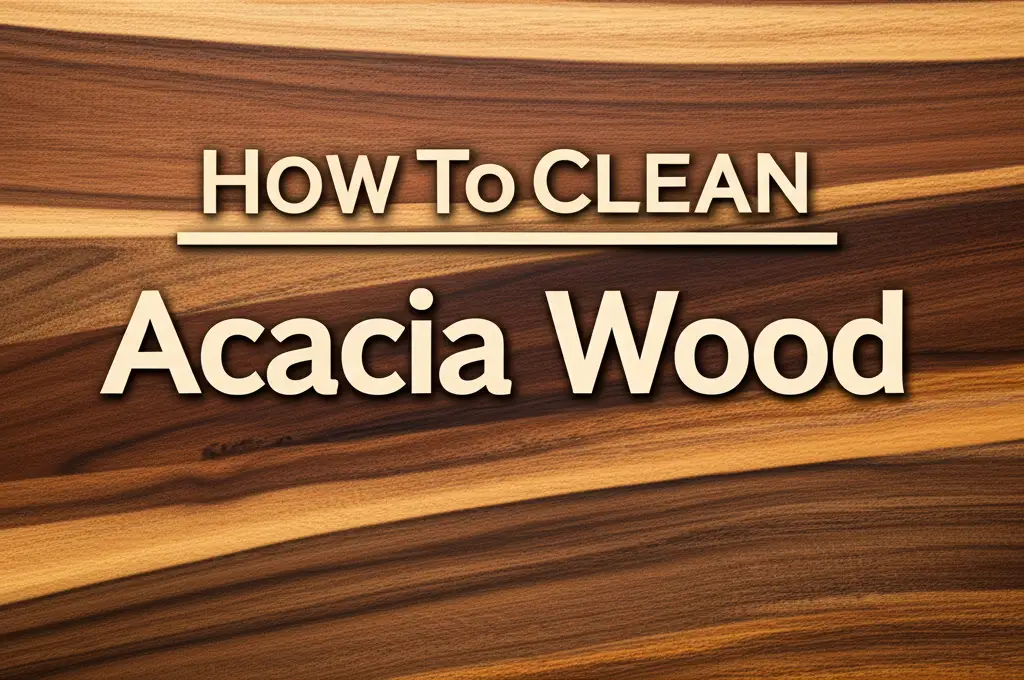· Wood Care · 11 min read
How To Clean Untreated Wood
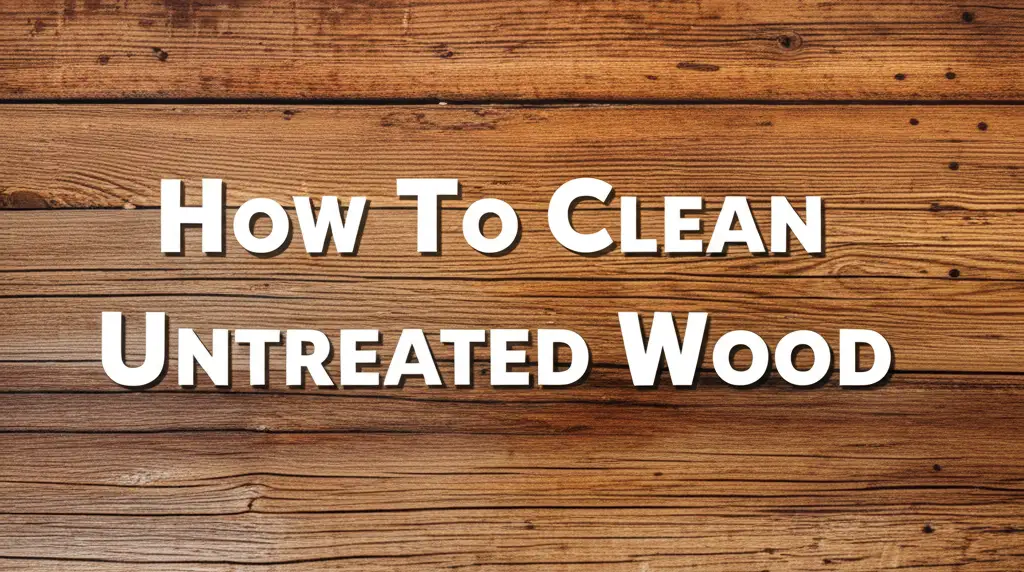
Clean Untreated Wood: Your Guide to Restoration
Untreated wood adds beauty to any home. Its natural look is charming. But this type of wood also absorbs dirt and stains easily. It lacks a protective finish. This means cleaning untreated wood requires a gentle approach. I understand the challenge of keeping it looking its best.
We need careful methods to avoid damage. This guide gives you the steps for cleaning untreated wood safely. We will cover different cleaning needs. You will learn how to handle light dirt and tough stains. We will also discuss common mistakes to avoid. My aim is to help you restore your untreated wood.
Takeaway:
- Untreated wood is delicate; always test cleaning solutions first.
- Use dry methods for light dirt to avoid moisture damage.
- Address stains and mold promptly with appropriate gentle solutions.
- Ensure proper drying to prevent warping and new mold growth.
- Avoid harsh chemicals and excessive water to keep wood healthy.
Clear Answer:
To clean untreated wood, start with dry methods like vacuuming or dusting. For deeper cleaning, use a mild soap and water solution or a white vinegar mix. Apply it sparingly, wipe immediately, and dry the wood thoroughly. Always test a hidden spot first to prevent damage.
Understanding Untreated Wood: What Makes It Unique?
Untreated wood is wood without any protective coating. It does not have stain, varnish, or sealant. This makes it different from finished wood surfaces. The wood grain is exposed and raw. This means it absorbs moisture and dirt very easily. You might find it on furniture, floors, or decorative items.
Its natural state gives it a unique character. People often choose it for a rustic or minimalist look. However, this lack of protection makes it vulnerable. It is open to spills, dust, and environmental changes. These things can quickly affect its appearance. Understanding this helps you clean it properly. We need to respect its natural porosity. Cleaning methods for untreated wood must be gentle and quick.
Knowing your wood’s true nature is the first step. This raw state means water can soak in fast. It can cause warping or dark spots. Dirt can also embed deeply into the fibers. My approach always starts with this understanding. This type of wood shows marks easily. You must approach its cleaning with care. It is a material that rewards thoughtful treatment.
Essential Preparations: Getting Ready to Clean Untreated Wood
Preparing your untreated wood before cleaning saves time. It also prevents damage. First, clear the area around the wood piece. Remove any items that might get in the way. This allows you to work freely. Next, gather all your cleaning supplies. Having everything ready makes the process smoother.
Always begin by removing loose dirt and dust. Use a soft brush or a vacuum cleaner with a brush attachment. This step is important. It prevents dust from turning into mud when wet. I always vacuum first. For larger items like wood floors, a broom works well. A soft cloth can wipe down furniture. Make sure the surface is free of debris.
You must perform a patch test. Choose an inconspicuous area on the untreated wood. Apply your chosen cleaning solution to this small spot. Wait a few minutes and observe the wood. Look for discoloration or adverse reactions. This test ensures the solution is safe for your specific wood type. It is a critical step I never skip. This simple check prevents big problems later. It gives you confidence to proceed with the cleaning. For similar prep for other wood projects, consider how to clean wood before staining.
Required Tools and Materials
- Soft-bristle brush or vacuum cleaner
- Clean, soft cloths (microfiber works well)
- Two buckets (one for cleaning solution, one for rinse water)
- Mild dish soap or white vinegar
- Spray bottle (optional, for vinegar solution)
- Protective gloves
- Clean towels for drying
Gentle Methods for Light Dirt and Dust on Untreated Wood
Handling light dirt and dust on untreated wood requires a gentle touch. Aggressive cleaning can push dirt deeper into the wood. It can also damage the surface. I always start with the least invasive methods. This preserves the natural beauty of the wood. You want to lift the dirt, not grind it in.
For regular dusting, use a soft, dry cloth. Microfiber cloths are good because they trap dust. They do not just move it around. Wipe the wood in the direction of the grain. This helps to pick up dust effectively. For dust in crevices, use a soft-bristle brush. An old, clean paintbrush works well for this. Always use light pressure.
A vacuum cleaner with a brush attachment is also very useful. This is especially true for untreated wood floors or large furniture pieces. The suction removes dust and small debris. The brush prevents scratching the delicate surface. Regular dry cleaning prevents dirt buildup. This means you will need deep cleaning less often. These simple steps keep your untreated wood looking fresh. They are part of my regular cleaning routine for how to clean wood surfaces.
Tackling Grime and Mild Stains on Untreated Wood Surfaces
When dry methods are not enough, it is time for a gentle wet clean. This approach helps with light grime and fresh stains. The key is to use minimal moisture. Water is untreated wood’s enemy when used excessively. My preferred cleaning solution is simple: mild dish soap and water.
Mix a few drops of mild dish soap into warm water. The water should not be hot. You want a very dilute solution. Dip a clean, soft cloth into the solution. Wring out the cloth thoroughly. It should be barely damp, not wet. Gently wipe the affected area of the untreated wood. Work in small sections to control moisture.
For slightly tougher spots, a white vinegar solution can work wonders. Mix equal parts white vinegar and water in a spray bottle. Lightly mist the stained area. Immediately wipe it with a clean, dry cloth. Vinegar is a natural cleaner and deodorizer. It helps with many types of marks. If you need to remove various marks from any wood, learn more about how to clean stains on wood. For furniture, this approach is similar to how to clean wood furniture with vinegar. Always follow up quickly with a dry cloth. This stops moisture from soaking into the wood.
Removing Stubborn Stains and Mold from Untreated Wood
Stubborn stains and mold need more focused treatment on untreated wood. These issues can penetrate deep into the wood fibers. Acting quickly prevents further damage. I approach these problems with specific solutions. You must be cautious not to spread mold spores.
For deep-set stains like water rings or dark spots, try a solution of oxalic acid. You can buy oxalic acid crystals at hardware stores. Mix a small amount with water to create a paste. Apply the paste to the stain. Let it sit for a few minutes, then gently scrub with a soft brush. Rinse with a damp cloth and dry immediately. This acid helps lighten dark wood stains. Always wear gloves and eye protection when using oxalic acid.
Mold and mildew pose a serious threat to untreated wood. They can cause health issues and structural damage. For surface mold, mix borax with water to form a paste. Apply the paste to the moldy area. Let it sit for 10-15 minutes. Scrub gently with a soft brush. Wipe away the residue with a damp cloth. Make sure to dry the area completely afterward. For stubborn black mold, a more direct approach is needed, similar to what you would do when learning how to clean black mold off wood. If the mold is on furniture, these steps are relevant to how to clean mold off of wood furniture. Proper ventilation is important during this process.
Drying and Protecting Your Untreated Wood After Cleaning
Proper drying is a crucial step after cleaning untreated wood. If wood stays wet, it can warp, crack, or grow mold. This undoes all your cleaning efforts. My rule is to dry it immediately and thoroughly. Do not let any moisture linger on the surface.
After wiping down the wood, use clean, dry towels. Blot the surface to absorb excess water. Press firmly to pull moisture from the pores. For large pieces, like floors, you might need several towels. Air circulation is also important. Open windows or use fans to help the wood dry naturally. Do not expose the wood to direct heat sources. This can cause the wood to dry too fast and crack. Let the wood air dry completely for at least 24-48 hours before any further steps.
Consider applying a protective finish once the wood is fully dry. While the wood is “untreated,” you can choose to seal it after cleaning. A natural oil or a clear, water-based sealant can protect the wood. It helps prevent future stains and makes cleaning easier. This step is optional but highly recommended for longevity. It creates a barrier without changing the natural look. It helps you preserve the effort you put into maintaining how to clean raw wood. Choose a product made for unfinished or natural wood.
Common Mistakes to Avoid When Cleaning Untreated Wood
Cleaning untreated wood correctly means avoiding common pitfalls. Many mistakes can cause permanent damage. My goal is to help you keep your wood beautiful for years. Knowing what not to do is as important as knowing what to do. This prevents costly repairs or replacements.
One big mistake is over-wetting the wood. Untreated wood acts like a sponge. Too much water soaks in quickly. This leads to swelling, warping, and dark water marks. Always wring out cloths very well. Use minimal liquid for cleaning. Dry the wood immediately after applying any moisture. Remember, damp is good, wet is bad.
Another error is using harsh chemicals. Bleach, ammonia, or strong detergents can strip the wood. They can discolor it or break down its fibers. Stick to mild soaps or natural cleaners like vinegar. Always check product labels. Also, avoid abrasive scrubbers. Steel wool or rough sponges can scratch the soft surface. Use soft cloths or brushes instead. Scrubbing too hard can also damage the wood grain. Be gentle in your approach. These simple precautions protect your wood’s integrity.
FAQ Section
Q1: Can I use bleach on untreated wood?
No, you should not use bleach on untreated wood. Bleach is a very harsh chemical. It can strip the wood’s natural color. It also weakens the wood fibers. Bleach can cause permanent discoloration. It might also leave a residue that makes the wood brittle. Stick to milder, safer cleaning agents.
Q2: How often should I clean untreated wood?
The cleaning frequency depends on its use and location. For indoor untreated wood furniture, light dusting weekly is good. Deep cleaning might be needed every few months or as stains appear. Outdoor untreated wood might need cleaning more often, perhaps seasonally, due to exposure to elements.
Q3: Does cleaning untreated wood cause warping?
Cleaning untreated wood can cause warping if you use too much water. Untreated wood absorbs moisture easily. Excessive wetting can make the wood swell and then warp as it dries unevenly. Always use minimal water. Dry the wood thoroughly and quickly after cleaning. This prevents warping.
Q4: Is unfinished wood the same as untreated wood?
Yes, “unfinished wood” and “untreated wood” usually mean the same thing. Both terms refer to wood that has no protective coating. It lacks stain, varnish, or sealant. This makes the wood porous and natural. It is in its raw state, ready for cleaning or finishing.
Q5: Can I sand untreated wood after cleaning?
You can sand untreated wood after cleaning, but only if needed. Sanding helps remove remaining blemishes or smooth the surface. Ensure the wood is completely dry first. Use fine-grit sandpaper (180-220 grit) and sand with the grain. This prepares the wood for an optional protective finish.
Q6: How do I protect untreated wood after cleaning?
After cleaning and drying, you can protect untreated wood with a natural oil or a water-based sealant. Oils like tung oil or linseed oil penetrate and enhance the wood. Sealants create a clear barrier. This protection helps repel spills and dirt. It makes future cleaning easier and prolongs the wood’s life.
Conclusion
Cleaning untreated wood feels like a delicate dance. We start by understanding its natural, porous nature. This guides our choice of gentle methods. From light dusting to tackling tough stains, careful steps make a big difference. I hope this guide helps you restore your untreated wood surfaces. Remember, less water is always better. Quick drying prevents common problems like warping or mold growth.
You have learned simple yet effective ways to preserve the beauty of your untreated wood. Always test solutions first. Use soft tools. Embrace patient and gentle cleaning. This approach keeps your wood looking its best for years. By following these steps, you maintain its natural charm. Your untreated wood pieces will continue to add warmth to your home. Apply these methods, and enjoy the lasting beauty of your natural wood.
- untreated wood cleaning
- natural wood care
- wood stain removal
- mold on wood
- wood maintenance

